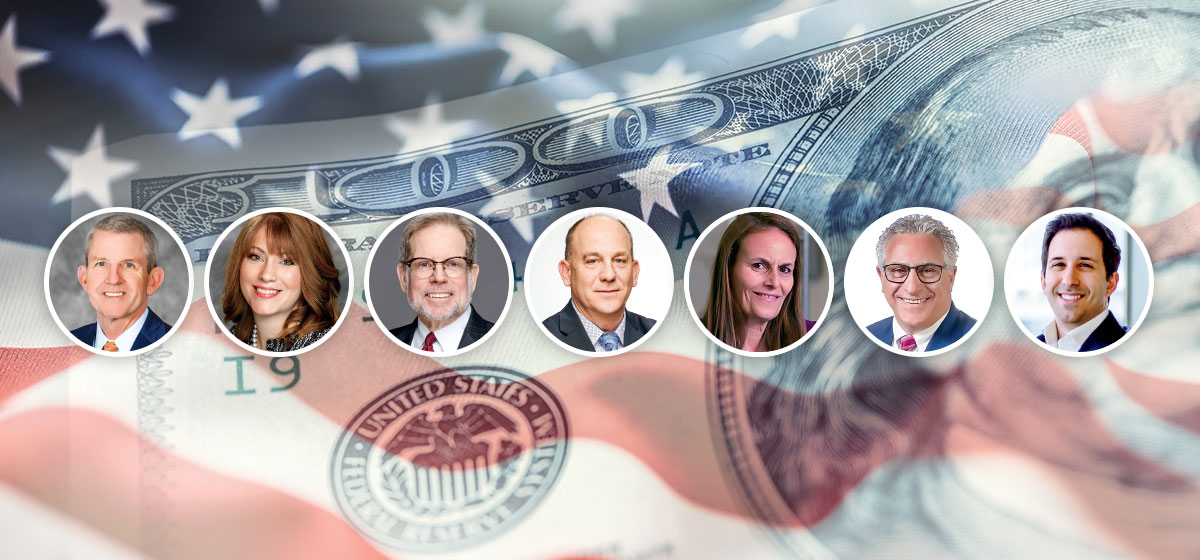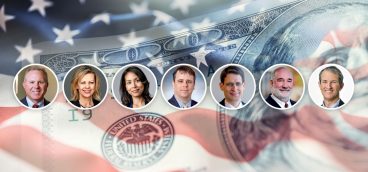
Pittsburgh Quarterly asked the region’s top experts to respond to these questions: As the U.S. economy gradually recovers from the pandemic, which sectors of the market do you like now? How are you positioning client portfolios? We thank them for giving readers their responses, which follow. Read part one here.
Jim Wilding, Confluence Financial Partners
We are very optimistic on the U.S. and world economies as we emerge from this global pandemic. 2020 was a very difficult year. Still, as nearly always happens, the stock market began rebounding significantly before we were out of the woods economically. In last year’s second quarter, the gross domestic product of the United States decreased at an annualized rate of over 30 percent. Yet the S&P 500 advanced by 20 percent in that same time period and in August, six months into the COVID-19 pandemic, the stock market hit a new all-time high. Of course, not all companies’ share prices did well last year. Energy companies, banks, real estate, airlines and the aerospace sector all had very challenging business environments brought on by the pandemic; consequently, their share prices suffered. We feel there are opportunities today in many of those areas to invest in quality companies at reasonable prices. We have been rebalancing our client portfolios to trim a bit from growth stocks that had outsized returns in 2020, while increasing exposure to dividend-paying companies with attractive valuations. Nonetheless, as believers in owning diversified portfolios of world-class companies for the long run, our rebalancing is at the margins. Most importantly, we are working with our clients to understand what matters most to them, in order to help them maximize their lives and legacies. With this open communication, we try to create the best portfolios, enabling our clients to get where they want to go with as little worry as possible.
Alison Wertz, Bill Few Associates
As long-term investors, we don’t typically make short-term sector bets. However, Pfizer’s November announcement of their vaccination having a 95 percent efficacy was a game changer. Up to that point in time, technology and growth-oriented investments across every category had greatly outperformed. This was a great opportunity to lock in gains from growth stocks and rebalance back to those industries that would most benefit from the economy reopening (retail, financials, energy and industrial sectors). On the bond side of portfolios, we are concerned about rising interest rates and are utilizing less interest-rate-sensitive strategies such as floating-rate bonds and shorter duration investments.
Thomas Wentling, The WTL Group, Morgan Stanley
It is very apparent the pent-up demand from the pandemic is going to catapult the economy forward like a cannon shot. Before you get too giddy with anticipation, a note of caution is in order. Financial markets have anticipated this for some time, and therefore valuations for stocks and bonds, broadly speaking, are rich, to put it mildly. The S&P 500 price earnings ratio on forward earnings is 21 times (as of April 6, 2021), or a 4.8 percent earnings yield. Since there is no maturity or return of principal on a stock, its “duration” is infinite. Are you comfortable investing at 5 percent from now to the hereafter? Sure, earnings will grow over time, but stocks fluctuate at 15 percent or so (current standard deviation). Is that a big enough safety cushion for you? Well, the 30-year U.S. Treasury Bond currently yields 2.3 percent, so it’s about twice that, but is either attractive? I don’t think so. Not enough safety margin for war, pestilence, plague, inflation and other unspeakables. So what’s an investor to do? Look to areas passed by in the current run-up. That means “value” investments instead of the current “growth” beauty queens, International and Emerging Markets, which have been left in the dust over the last decade, and companies and things that benefit if inflation exceeds current consensus forecasts. Because market timing is tough, this doesn’t mean abandon the S&P. It just means that at the margin, you may be able to improve results by over and underweighting with an eye toward what the crowd passed by.
Doug Stirling, Stirling Wealth Management at Janney Montgomery Scott LLC
There are several major factors that support an outlook for a major economic recovery. A backdrop of massive fiscal and monetary stimulus. There is significant pent-up demand that will be unleashed as the economy reopens. Consumers are very healthy, bolstered by stimulus checks and extra federal unemployment, with excess savings estimated at well over $2 trillion. Banks are also very healthy, willing and able to lend for big-ticket items. A healthy consumer and financial system are the opposite conditions we had in the aftermath of the 2008 financial crisis, which saw a very muted recovery.
This backdrop suggests owning deep cyclical sectors and the industries that were hurt the most by the pandemic lockdowns. Travel and Leisure are big beneficiaries of the reopening. Energy is now benefiting from increased demand while industrials and materials are benefiting from the manufacturing boom that started shortly after the hard lockdown of last spring; this is also supported by massive fiscal and monetary stimulus on a global basis. Financials are benefiting from the economic recovery and higher long-term interest rates that go along with economic normalization.
While we view safe haven Treasury bonds as a necessary part of most portfolios, Treasuries face a major headwind as the economy normalizes, given that bond prices move opposite of bond yields. This also suggests limited upside for corporate bonds.
Beth Genter, Schenley Capital
We have discovered many new opportunities to invest clients’ available cash. The health care sector is of obvious interest as it relates to the pandemic. We are also interested in companies that have invested in financial technology. Money movement, online investing, payment processing and new online systems are integral today. Venmo is a perfect example of a new way people pay and get paid. Not only is Venmo a means of transacting, but it also incorporates the social media aspect of connecting with friends on a digital platform. We also like companies that develop cloud-based platforms that facilitate the remote working environment. There are new software programs that, for example, help people work more efficiently in teams, track worker productivity and have other work management features. Another sector that we like which has exhibited great prosperity during the pandemic is the home builders. People stuck at home during this time have had more time to focus on those homes and have undertaken projects such as remodeling their kitchens, creating home offices, re-landscaping their gardens and other projects, large and small. Lastly, we have turned our attention to the sector that includes the electronic vehicle ecosystem, or EV. This includes the actual vehicles, their components and batteries, and the charging stations and raw materials. Some of the EV manufacturers sell on a subscription basis and also produce the batteries. On a final note, we are excited to discover and invest in individual stocks, some of which have already come to light and others that will emerge in the future as our economy corrects, recovers and prospers.
Joseph A. Scarpo, CAPTRUST
In the post-pandemic era, our best advice is also our mantra: The biggest driver of good outcomes is proper asset allocation. The time to consider changes is from a position of strength rather than being forced to react in times of stress. With stock indices at all-time highs, now is the time for investors to meet with their financial advisors to evaluate and tweak their plans, as needed. And given the wild market swings we’ve seen, it is possible that asset weights have gotten out of whack, creating over- or under-exposures easily fixed by rebalancing portfolios.
From a positioning standpoint, we believe the combination of vaccines, stimulus, pent-up demand and strong consumer spending power sets the stage for outsized growth. We are focused on three key strategies:
1. Business-cycle positioning. We continue to favor sectors (such as financials) poised to benefit from the reopening, including more economically sensitive and value-oriented firms. However, given the significant rally that has already occurred in these sectors, we believe diversification is key.
2. Fixed income. We are mindful of two important roles played by bonds within portfolios: downside protection and yield. With interest rates normalizing from historically low levels, we are thoughtful about credit exposures and favor areas with strong fundamentals.
3. Uneven global recovery. We recognize that the pace of economic recovery will be uneven, with widely different regional progress on vaccinations and reopening. At present, we favor U.S. equities, as well as stocks in emerging markets that stand to benefit from the global recovery and restocking cycle.
Jonathan Dane, Defiant Capital Group
At Defiant Capital Group, we continue to see strength in the U.S. economy and believe the United States is the best-positioned developed market to recover from COVID. As vaccinated consumers start to leave their homes more this summer, including returning to offices, we expect services-sector businesses will see a strong pick-up in activity and drive further labor market improvement. We are seeing these trends unfold in “reopened” states such as Florida, Alabama and Arkansas, where the pick-up in spending and consumer travel is driving unemployment back near pre-COVID levels.
In our client portfolios, we are emphasizing risk assets in U.S. equity markets but have started to take a more balanced approach (i.e., less growth stocks) given concerns over higher inflation. For clients seeking yield, we continue to emphasize the use of alternative investments including Private Debt lending and Real Assets, both of which have the ability to provide consistent cash flow with strong collateral and should benefit from President Biden’s proposed infrastructure stimulus bill.












